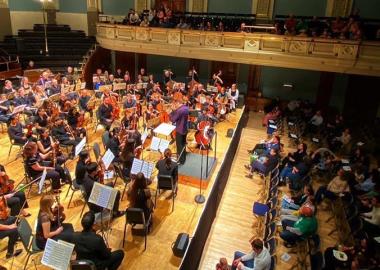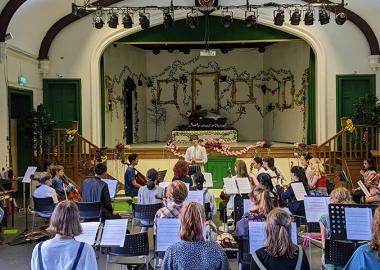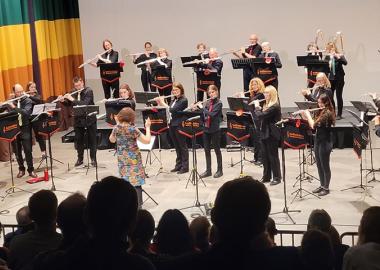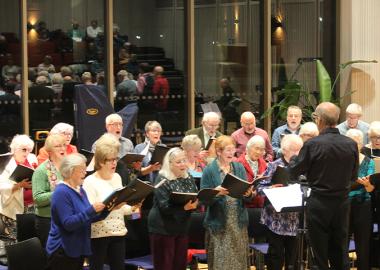The Hitchhiker’s Guide to the Galaxy by Douglas Adams identifies Somebody Else’s Problem (SEP) as: something we can't see, or don't see, or our brain doesn't let us see, because we think that it's somebody else's problem... [A] Somebody Else's Problem field... relies on people's natural predisposition not to see anything they don't want to, weren't expecting, or can't explain…’
I have often felt that when the topics of inclusion and access come up, it is as if they have just such a Somebody Else’s Problem field around them.
Perhaps this is because the first thing that comes to mind in this context is a person who uses a wheelchair. And if you don’t have a person who uses a wheelchair in your group or banging at the door of your group to be let in – you might think that inclusion and access are SEPs.
14.1 million disabled – just over a fifth of the entire UK population. And of those, only 17% are born with a disability – 83% of all disabilities are acquired later in life.
But of the 14.1 million disabled people in the UK just 8% (yes 8%) are wheelchair users. Pause here to take in that number: 14.1 million disabled – just over a fifth of the entire UK population. And of those, only 17% are born with a disability – 83% of all disabilities are acquired later in life. 1 in 20 children are disabled; 1 in 7 of the working population, and 1 in 2 of those over state pension age.
So you may think there is no one with a disability in your music group, but are you sure? Many disabilities are not visible to the eye. Many are related to age such as gradually developing visual or hearing impairments, or as the consequence of, for instance, a stroke. Then there are the early stages of dementia and the many forms of neurodiversity, from dyslexia to autism...
It is likely, given the statistics, that a number of people in any music group have some condition which makes it harder for them to access the activity – and that’s the ones already there in the group. What about new people who might want to join, whom you might want to encourage to join?
Most groups I know feel they are welcoming to everybody and genuinely want to be welcoming to everybody. But I have learnt that just saying and believing that doesn’t make it happen, that we have to work at it.
The social model of disability says that people are disabled by barriers, not by their impairments and so surely we can all do something to tackle these barriers to accessing our activities. But what and how?
After all, it is the people with lived experience of disability who are best placed to tell you what might stop them from being fully included in your group.
You can start by looking at your activity from a user’s point of view, by asking those users. After all, it is the people with lived experience of disability who are best placed to tell you what might stop them from being fully included in your group. A survey of your members perhaps? And there are now many wonderful charities who can help with advice, information, resources when you have found out what the main barriers are that you need to dismantle. And who will tell you that it doesn’t have to be difficult or expensive.
The main thing is recognising that inclusion and access is not Somebody Else’s Problem – that it’s in fact Everybody’s Problem.
Barbara Eifler
Chief Executive, Making Music
There are many barriers to attending events that can have an impact on who takes part in your group. Members can watch a recording of our guest speaker event on access and inclusion solutions to help overcome these barriers.










